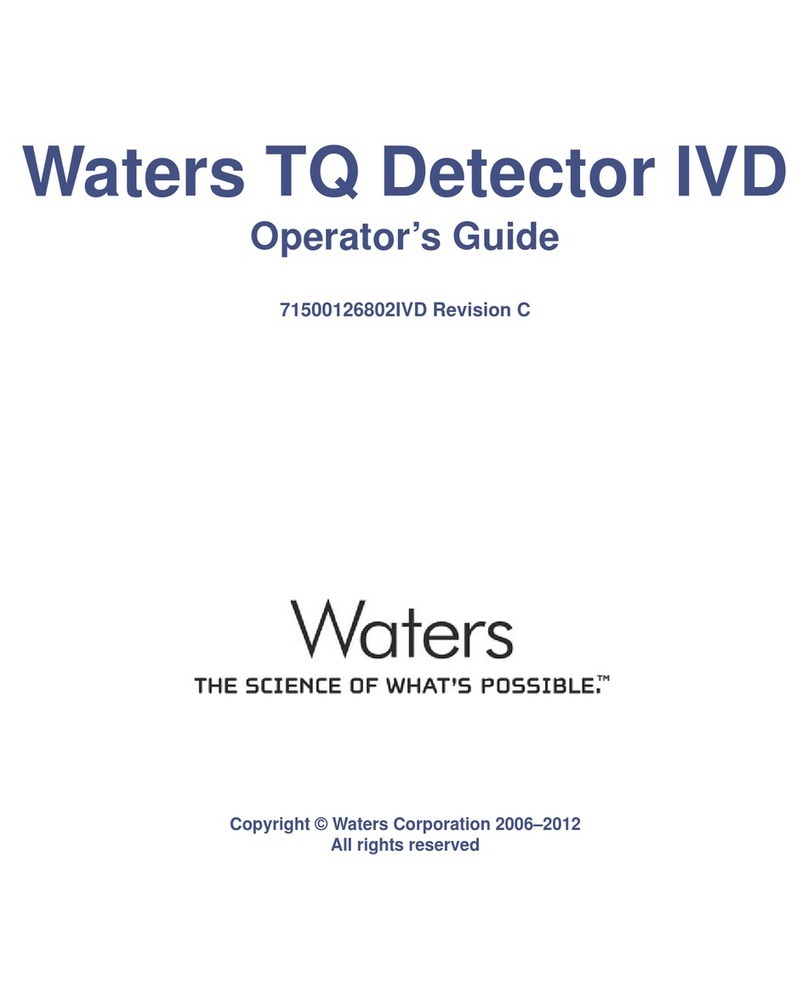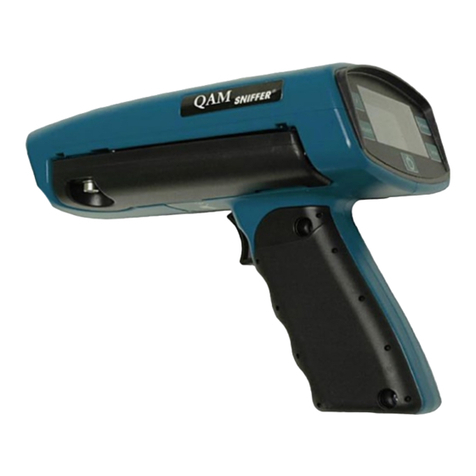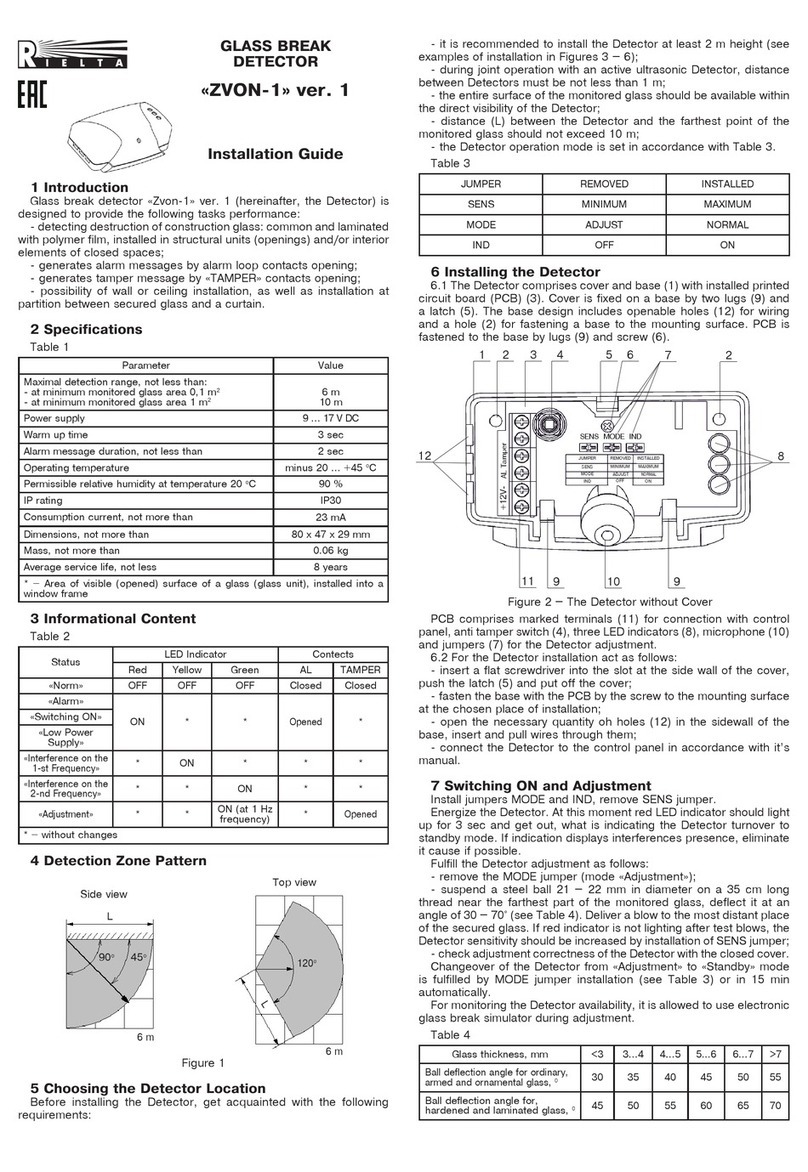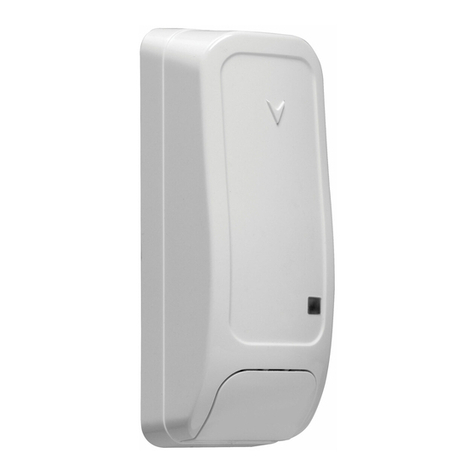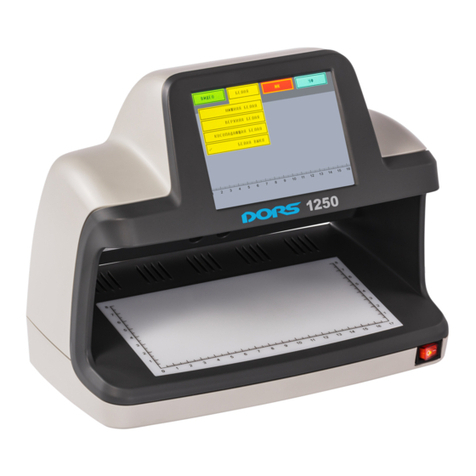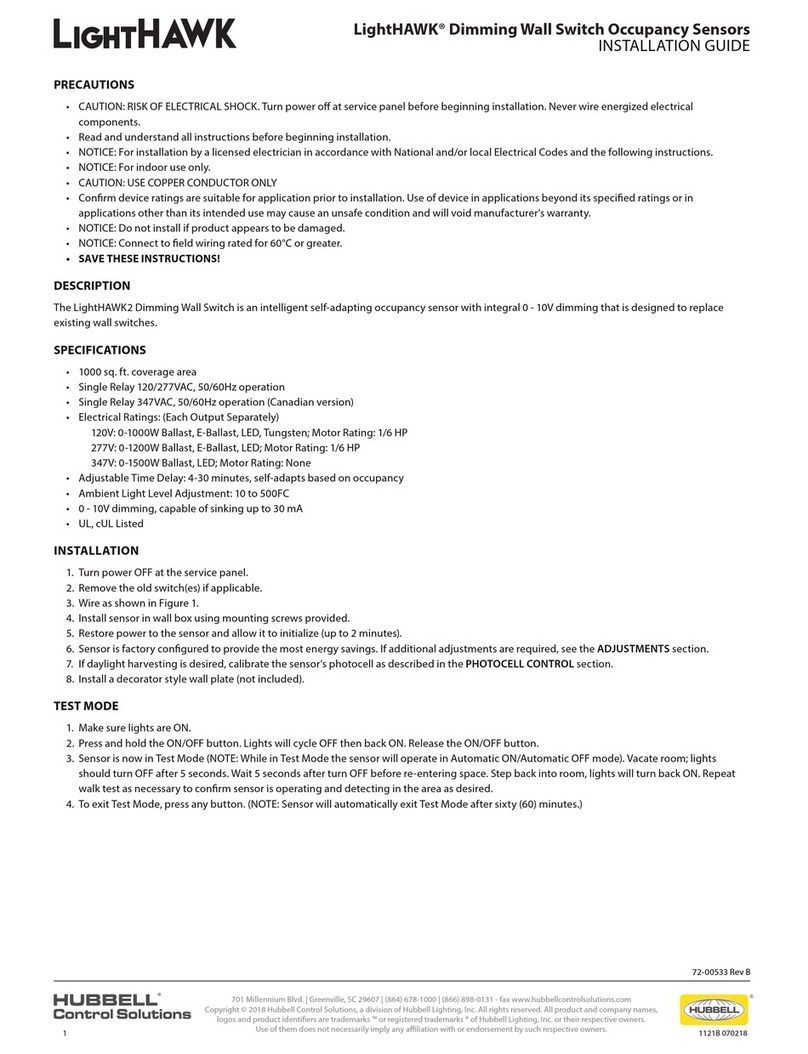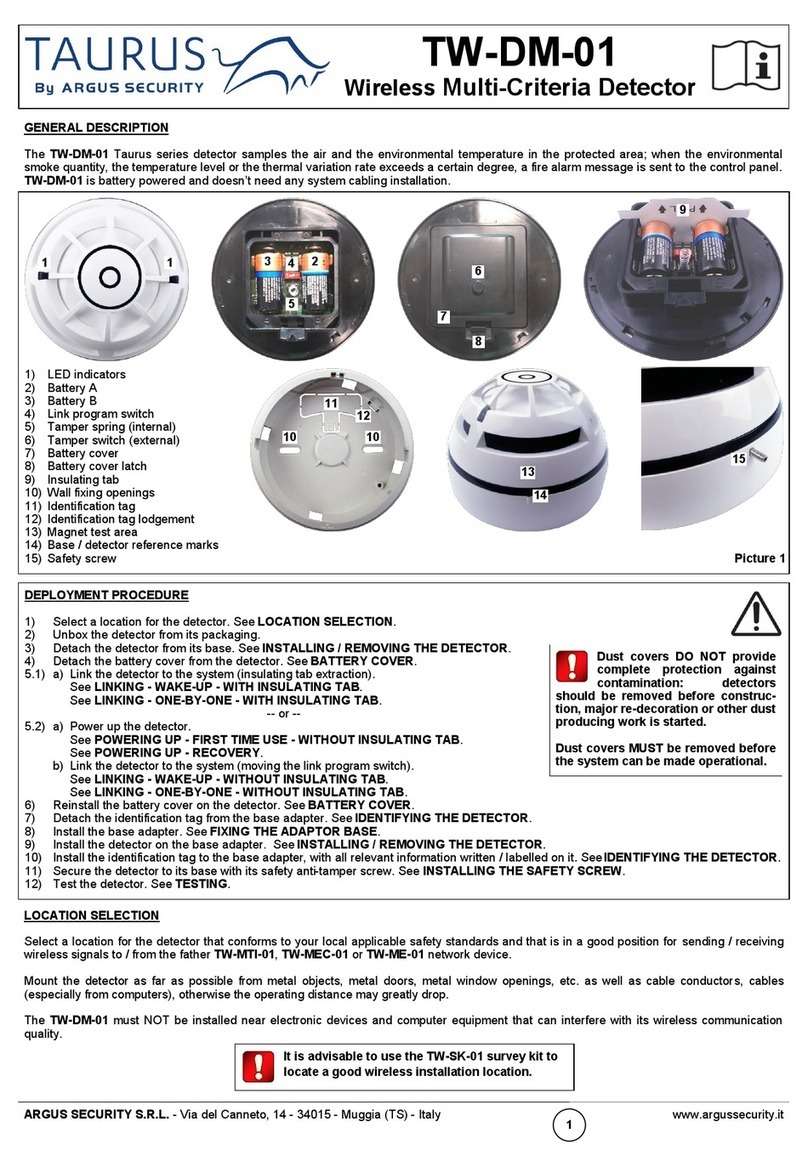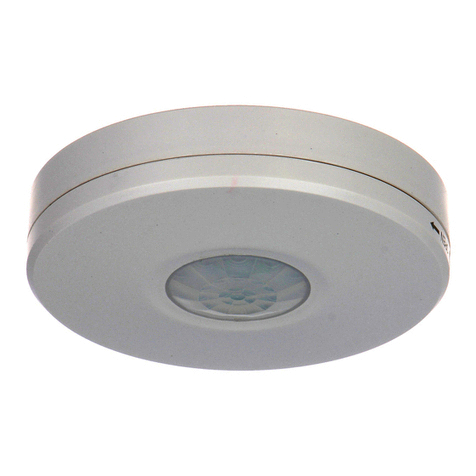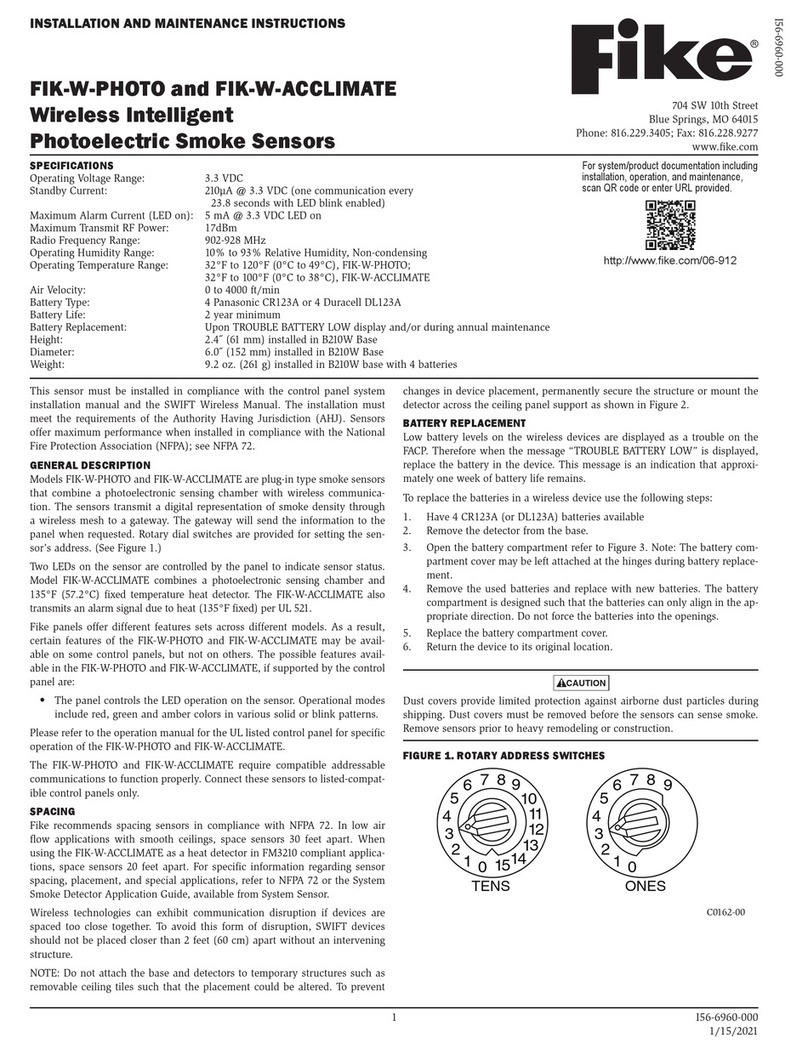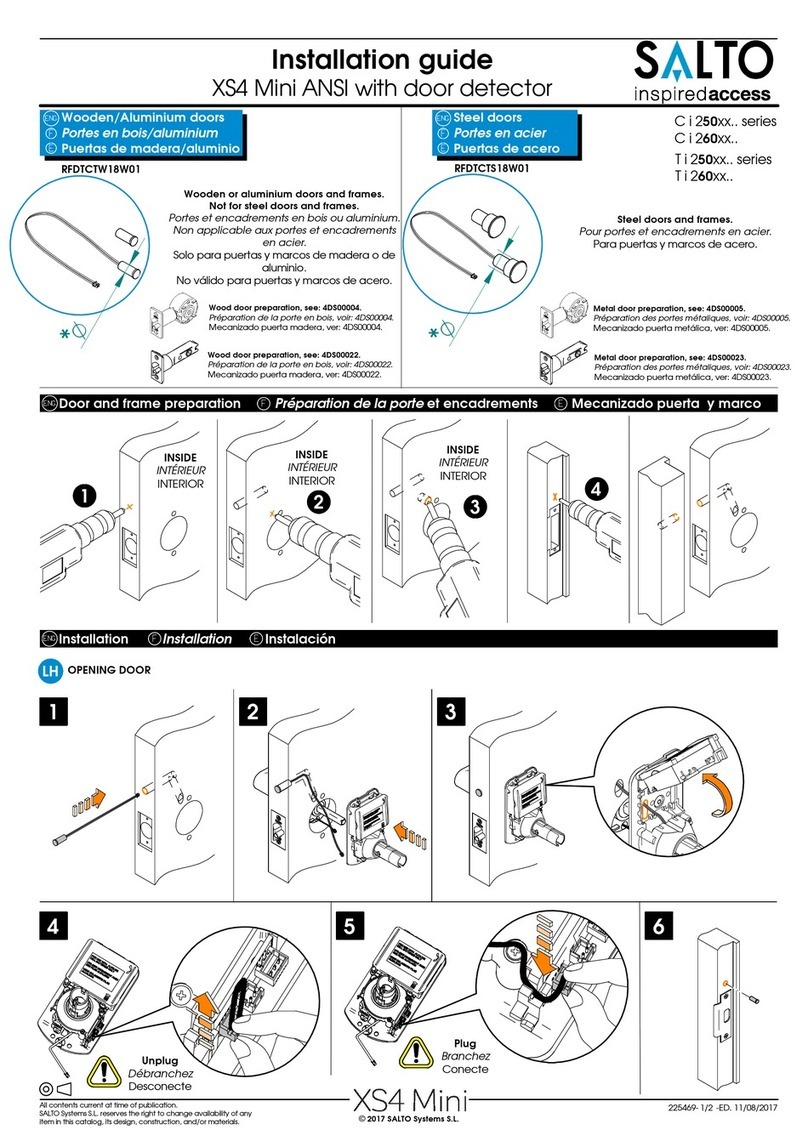WATERS CORPORATION ACQUITY Premier Operating manual

ACQUITY Premier TUV Detector
Overview and Maintenance Guide
715006903
Version 01
Copyright © Waters Corporation 2021
All rights reserved

General information
Copyright notice
© 2021 WATERS CORPORATION. PRINTED IN THE UNITED STATES OF AMERICA AND IN
IRELAND. ALL RIGHTS RESERVED. THIS DOCUMENT OR PARTS THEREOF MAY NOT BE
REPRODUCED IN ANY FORM WITHOUT THE WRITTEN PERMISSION OF THE PUBLISHER.
The information in this document is subject to change without notice and should not be construed
as a commitment by Waters Corporation. Waters Corporation assumes no responsibility for any
errors that may appear in this document. This document is believed to be complete and accurate
at the time of publication. In no event shall Waters Corporation be liable for incidental or
consequential damages in connection with, or arising from, its use. For the most recent revision
of this document, consult the Waters website (www.waters.com).
Trademarks
ACQUITY™ is a trademark of Waters Corporation.
ACQUITY UPLC™ is a trademark of Waters Corporation.
Empower™ is a trademark of Waters Corporation.
MassLynx™ is a trademark of Waters Corporation.
PEEK™ is a trademark of Victrex PLC.
Teflon™ is a trademark of E.I. du Pont de Nemours and Company or its affiliates.
THE SCIENCE OF WHAT'S POSSIBLE™ is a trademark of Waters Corporation.
Triton™ X-100 is a trademark of The Dow Chemical Company or an affiliated company of Dow.
UPLC™ is a trademark of Waters Corporation.
Waters™ is a trademark of Waters Corporation.
Waters Quality Parts™ is a trademark of Waters Corporation.
All other trademarks are property of their respective owners.
Customer comments
Waters’ Customer Experience and Knowledge Management organization invites you to report
any errors that you encounter in this document or to suggest ideas for otherwise improving it.
October 21, 2021, 715006903 Ver. 01
Page ii

Help us better understand what you expect from our documentation so that we can continuously
improve its accuracy and usability.
We seriously consider every customer comment we receive. You can reach us at
Contacting Waters
Contact Waters with enhancement requests or technical questions regarding the use,
transportation, removal, or disposal of any Waters product. You can reach us through the
Internet, telephone, fax, or conventional mail.
Contact method Information
www.waters.com The Waters website includes contact
information for Waters locations worldwide.
iRequest Request technical support for your Waters
instruments and software. iRequest is a free
and secure Web service that allows you to
obtain quick answers from our online
Knowledge Base, request support and service
for Waters instruments and software, or
schedule a planned service activity.
Note: In areas managed by authorized
distributors, iRequest may not be available.
Contact your local distributor for more
information.
Telephone and fax From the USA or Canada, phone
800-252-4752 or fax 508-872-1990.
For other locations worldwide, phone and fax
numbers appear in the Waters Local Offices
information.
Conventional mail Waters Corporation
Global Support Services
34 Maple Street
Milford, MA 01757
USA
Safety considerations
Some reagents and samples used with Waters instruments and devices can pose chemical,
biological, or radiological hazards (or any combination thereof). You must know the potentially
October 21, 2021, 715006903 Ver. 01
Page iii

hazardous effects of all substances you work with. Always follow Good Laboratory Practice
(GLP), and consult your organization’s standard operating procedures as well as your local
requirements for safety.
Safety hazard symbol notice
The symbol indicates a potential hazard. Consult the documentation for important
information about the hazard and the appropriate measures to prevent and control the hazard.
Considerations specific to the ACQUITY Premier TUV detector
Warning: To avoid electric shock, do not remove protective panels from the device.
The components within are not user-serviceable.
FCC radiation emissions notice
Changes or modifications not expressly approved by the party responsible for compliance, could
void the user's authority to operate the equipment. This device complies with Part 15 of the FCC
Rules. Operation is subject to the following two conditions: (1) this device may not cause harmful
interference, and (2) this device must accept any interference received, including interference
that may cause undesired operation.
Electrical power safety notice
Do not position the device so that it is difficult to disconnect the power cord.
Equipment misuse notice
If equipment is used in a manner not specified by its manufacturer, the protection provided by the
equipment may be impaired.
Safety advisories
Consult the "Safety advisories" appendix in this publication for a comprehensive list of warning
advisories and notices.
Operating the device
When operating the device, follow standard quality-control (QC) procedures and the guidelines
presented in this section.
October 21, 2021, 715006903 Ver. 01
Page iv

Applicable symbols
The following symbols can be present on the device, system, or packaging.
Symbol Definition
Manufacturer
Date of manufacture
Confirms that a manufactured product complies
with all applicable European Community
directives
UK Conformity Assessed marking confirms that
a manufactured product is in conformity with
the applicable requirements for products sold
within Great Britain
Australia EMC compliant
Confirms that a manufactured product complies
with all applicable United States and Canadian
safety requirements
Environmentally friendly use period (China
RoHS): indicates the number of years from the
date of manufacture until the product, or
components within the product, are likely to be
discarded or degrade into the environment
Consult instructions for use
Alternating current
Electrical and electronic equipment with this
symbol may contain hazardous substances and
should not be disposed of as general waste
For compliance with the Waste Electrical and
Electronic Equipment Directive (WEEE)
2012/19/EU, contact Waters Corporation for the
correct disposal and recycling instructions
For indoor use only
October 21, 2021, 715006903 Ver. 01
Page v

Symbol Definition
No pushing
Do not connect to an LC system
10kg
max
Indicates the maximum load you can place on
that item (for example, 10kg)
Serial number
REF
Part number, catalog number
Audience and purpose
This guide is intended for individuals who install, operate, or maintain the ACQUITY Premier TUV
detector. It gives an overview of the technology and operation of the ACQUITY Premier TUV. To
install the detector, you should generally know how to set up and operate laboratory instruments
and computer-controlled devices and how to handle solvents. Use this guide in conjunction with
the system documentation and online Help.
Intended use of the detector
Waters designed the ACQUITY Premier TUV for use in liquid chromatography applications. The
ACQUITY Premier TUV is not intended for use in diagnostic applications.
Calibrating
To calibrate LC systems, adopt acceptable calibration methods using at least five standards to
generate a standard curve. The concentration range for standards must include the entire range
of QC samples, typical specimens, and atypical specimens.
When calibrating mass spectrometers, consult the instrument’s online Help system for calibration
instructions.
October 21, 2021, 715006903 Ver. 01
Page vi

Quality control
Routinely run three QC samples that represent subnormal, normal, and above-normal levels of a
compound. If sample trays are the same or very similar, vary the location of the QC samples in
the trays. Ensure that QC sample results fall within an acceptable range, and evaluate precision
from day to day and run to run. Data collected when QC samples are out of range might not be
valid. Do not report these data until you are certain that the instrument performs satisfactorily.
EMC considerations
Canada spectrum management emissions notice
This class A digital product apparatus complies with Canadian ICES-001.
Cet appareil numérique de la classe A est conforme à la norme NMB-001.
ISM classification: ISM group 1 class B
This classification was assigned in accordance with CISPR 11 Industrial Scientific and Medical
(ISM) instrument requirements.
Group 1 products apply to intentionally generated and/or used conductively coupled radio-
frequency energy that is necessary for the internal functioning of the equipment.
Class B products are suitable for use in both commercial and residential locations and can be
directly connected to a low-voltage, power-supply network.
This equipment complies with the emission and immunity requirements described in the relevant
parts of IEC/EN 61326: Electrical equipment for measurement, control, and laboratory use —
EMC requirements.
October 21, 2021, 715006903 Ver. 01
Page vii

Table of contents
General information........................................................................................................ii
Copyright notice......................................................................................................................................ii
Trademarks.............................................................................................................................................ii
Customer comments...............................................................................................................................ii
Contacting Waters..................................................................................................................................iii
Safety considerations.............................................................................................................................iii
Safety hazard symbol notice........................................................................................................... iv
Considerations specific to the ACQUITY Premier TUV detector.....................................................iv
FCC radiation emissions notice.......................................................................................................iv
Electrical power safety notice..........................................................................................................iv
Equipment misuse notice................................................................................................................ iv
Safety advisories.............................................................................................................................iv
Operating the device..............................................................................................................................iv
Applicable symbols.......................................................................................................................... v
Audience and purpose.................................................................................................................... vi
Intended use of the detector............................................................................................................vi
Calibrating....................................................................................................................................... vi
Quality control.................................................................................................................................vii
EMC considerations..............................................................................................................................vii
Canada spectrum management emissions notice..........................................................................vii
ISM classification: ISM group 1 class B..........................................................................................vii
1 Overview.....................................................................................................................12
1.1 Detector optics............................................................................................................................... 13
1.1.1 Optics assembly light path....................................................................................................13
1.1.2 Light-guiding flow cell operating principles........................................................................... 14
1.1.3 Filtering noise........................................................................................................................16
1.2 Wavelength verification and test.....................................................................................................17
1.3 Operational modes......................................................................................................................... 18
1.3.1 Single-wavelength mode.......................................................................................................18
1.3.2 Dual-wavelength mode......................................................................................................... 19
1.3.3 RatioPlot............................................................................................................................... 20
1.3.4 MaxPlot.................................................................................................................................20
October 21, 2021, 715006903 Ver. 01
Page viii

2 Preparation and operation........................................................................................ 21
2.1 Installing the detector..................................................................................................................... 21
2.2 Plumbing the detector.................................................................................................................... 23
2.3 Installing the multi-detector drip tray.............................................................................................. 26
2.4 Making Ethernet connections......................................................................................................... 28
2.5 I/O signal connector....................................................................................................................... 28
2.6 Connecting to the electricity source............................................................................................... 29
2.7 Starting the detector.......................................................................................................................30
2.7.1 Monitoring detector LEDs..................................................................................................... 31
2.7.2 About the detector control panel...........................................................................................32
2.7.3 Shutting down the detector for less than 24 hours................................................................33
2.7.4 Shutting down the detector for more than 24 hours..............................................................34
3 Maintenance procedures.......................................................................................... 35
3.1 Contacting Waters Technical Service ............................................................................................35
3.2 Safety and handling........................................................................................................................36
3.3 Spare parts.....................................................................................................................................36
3.4 Proper operating procedures..........................................................................................................36
3.5 Flushing the detector......................................................................................................................37
3.6 Maintaining the leak sensor............................................................................................................37
3.6.1 Resolving detector leak sensor errors.................................................................................. 37
3.6.2 Replacing the detector's leak sensor.................................................................................... 41
3.7 Maintaining the flow cell................................................................................................................. 44
3.7.1 Cleaning the flow cell............................................................................................................45
3.7.2 Performing a system acid-cleansing flush............................................................................ 47
3.7.3 Replacing the flow cell.......................................................................................................... 49
3.8 Replacing the lamp.........................................................................................................................52
3.9 Replacing the fuse..........................................................................................................................54
3.10 Cleaning the instrument's exterior................................................................................................55
October 21, 2021, 715006903 Ver. 01
Page ix

4 Error messages..........................................................................................................56
4.1 Startup error messages..................................................................................................................56
4.2 Error messages preventing operation............................................................................................ 58
A Safety advisories.......................................................................................................61
A.1 Warning symbols............................................................................................................................61
A.1.1 Specific warnings..................................................................................................................62
A.2 Notices...........................................................................................................................................63
A.3 Bottles Prohibited symbol.............................................................................................................. 64
A.4 Required protection........................................................................................................................64
A.5 Warnings that apply to all Waters instruments and devices...........................................................64
A.6 Warnings that address the replacement of fuses...........................................................................68
A.7 Electrical symbols.......................................................................................................................... 70
A.8 Handling symbols...........................................................................................................................71
B Specifications............................................................................................................72
B.1 Operational specifications..............................................................................................................72
B.2 Optical component specifications.................................................................................................. 73
B.3 Environmental specifications......................................................................................................... 73
B.4 Electrical specifications..................................................................................................................74
B.5 Dimensions.................................................................................................................................... 74
C Solvent considerations.............................................................................................75
C.1 Introduction....................................................................................................................................75
C.2 Solvent miscibility.......................................................................................................................... 76
C.2.1 How to use miscibility numbers............................................................................................78
C.3 Wavelength selection.....................................................................................................................78
C.3.1 UV cutoffs for common solvents...........................................................................................79
C.3.2 Mixed mobile phases............................................................................................................79
October 21, 2021, 715006903 Ver. 01
Page x

1 Overview
The ACQUITY Premier tunable ultraviolet (ACQUITY Premier TUV) optical detector is a two-
channel, ultraviolet/visible (tunable UV/Vis) absorbance detector designed for use in ACQUITY
Premier Systems. The detector, controlled by Empower, UNIFI, MassLynx, or third-party software
for both LC/MS and LC applications, operates as an integral part of the system.
The detector offers two basic, primary flow cell options: the analytical flow cell, with a volume of
500 nanoliters and a path length of 10 mm, and the high sensitivity flow cell, with a volume of 2.4
microliters and a path length of 25 mm. The design of both flow cells reflects the Waters
proprietary, light-guiding, flow cell technology. This guide focuses on the light-guiding, flow cell
operating principles and maintenance procedures.
The ACQUITY Premier TUV detector operates at wavelengths ranging from 190 to 700 nm. The
detector can sample up to 80 data points per second.
The detector has the following capabilities:
• Single or dual-wavelength – Monitors absorbance at one or two discrete wavelengths.
• Wavelength verification reference filter – Ensures wavelength accuracy.
• Automatic, second-order filter – Automatically engaged for wavelengths of 370 nm and
greater and removed for wavelengths 369 nm or less.
• Spectrum scan and storage – Supports spectrum scan, display, subtraction, storage, and
playback, in addition to standard absorbance and UV/Vis functionality.
• Full diagnostic capability – Supports built-in diagnostic tools to optimize functionality and
performance.
• One contact closure output – The detector has one configurable switch, which can
accommodate a maximum of ±30 VDC, 1.2-A current carrying capacity, and 0.5-A current
switching. The switch can trigger fraction collectors and other external devices, as well as
activate according to time, absorbance threshold, or ratio criteria.
• Thermal wander management – To mitigate thermal instability caused by ambient
temperature changes, the detector’s insulation ensures air flow across the optics bench, and
its variable speed fan runs at higher or lower speeds, as needed. The fan normally changes
speeds in response to the thermal changes. This feature can be optimized for two average
temperature zones or disabled for maximum cooling of the optics and flow cell.
• Median Baseline Filter (MBF) – A variation of the data mode, the MBF, decreases the effects
of gradient separations on the chromatographic baseline. It enhances the UV detector's
baseline stability by decreasing its curvature, making the development of integration methods
easier.
October 21, 2021, 715006903 Ver. 01
Page 12

1.1 Detector optics
The ACQUITY Premier TUV detector optics include these components:
• High brightness deuterium (D2) lamp
• Two mirrors: one off-axis, ellipsoidal mirror and one spherical mirror
• Filter wheel
• Shutter, wavelength calibration filter, and second-order filter
• Entrance slit
• Blazed, plane-holographic, diffraction grating
• Beamsplitter
• Sample and reference photodiodes
• Waters light-guiding flow cell
Figure 1–1: ACQUITY Premier TUV detector assembly
1.1.1 Optics assembly light path
The detector provides an extremely efficient design for exceptionally high light throughput. It
operates as follows:
1. The ellipsoidal mirror collects light from the lamp and focuses it through the filter wheel
onto the entrance slit. The spherical mirror directs light toward the grating. A different
portion of the spherical mirror focuses dispersed light of a particular wavelength band,
October 21, 2021, 715006903 Ver. 01
Page 13

determined by the grating angle, onto the entrance of the flow cell. Light exiting the flow
cell passes to the sample photodiode.
2. The beam splitter, located just ahead of the flow cell, diverts a portion of the light to a
reference photodiode.
3. When you specify a new wavelength via Empower, MassLynx, or third-party software, the
detector rotates the grating to the appropriate position.
4. The preamplifier board integrates and digitizes the currents from the photodiodes for
processing by the signal processing electronics and output to a computer, chart recorder,
or integrator.
1.1.2 Light-guiding flow cell operating principles
Small-bore, high-capacity columns like those used in UPLC produce small-volume peaks. To
avoid bandspreading and maintain concentration, the flow cell volume must be correspondingly
small. Waters suggests holding cell volume to one tenth or less than the peak volume. To achieve
the required volume reduction with conventional absorbance detector flow cells, you must reduce
the path length to avoid a drastic cut in light throughput. Reduced path length results in less
analytical sensitivity as predicted by Beer’s law, but high light levels are necessary to preserve a
high signal-to-noise ratio.
Fortunately, a small-volume light-guiding flow cell can be designed with optimum path length and
high light throughput. Such a flow cell is analogous to an optical fiber, where the core is the fluid
sample and the cladding is Teflon AF, a unique, chemically inert, amorphous fluoropolymer made
by DuPont. The refractive index of Teflon AF is lower than that of water or other HPLC mobile
phases. Light rays entering the liquid core, within the cone half-angle, α, are totally internally
reflected when they meet the Teflon AF boundary. These rays are transmitted through the flow
cell, theoretically without loss, except for absorption by the sample.
Figure 1–2: Light transmission through a light-guiding flow cell
This information complements the foregoing illustration:
• The core of the light guide is the fluid sample with refractive index n1.
• The cladding is a Teflon AF tube with refractive index n2. Index n2 < n1.
• The cross-sectional area of the tube is A and the length d. Cell volume = Ad.
October 21, 2021, 715006903 Ver. 01
Page 14

In the figure, two rays of light are shown reflecting from the core-cladding interface. In a flow cell,
the number of “bounces” depends on the length of the Teflon AF tube, its inside diameter
(lumen), and the ray angle, “α”. The light beam (which represents the energy transmitted through
the cell) is comprised of many such rays, up to a maximum whose angle is theoretically set by
the refractive index of the core and cladding. In the ACQUITY Premier TUV detector, this angle is
mechanically controlled by components external to the flow cell so that the variation in refractive
index arising from different mobile phases does not materially influence the efficiency of the
transmitted energy.
The following schematic diagram of the flow cell shows the light-guiding portion of the cell inside
the cell assembly.
Figure 1–3: Light-guiding portion of flow cell
The sample fluid is introduced and removed from the flow cell via PEEK tubing. Probe radiation
from the lamp housing is focused onto the input face of the optical fiber that forms one end of the
flow cell. Light travels down this optical fiber until it encounters the fluid channel defined by the
internal diameter of the Teflon AF tube. The light then exits the optical fiber and enters the fluid-
filled Teflon AF tube. As the light passes through this tube, it interacts with the sample stream.
Any absorption by the fluid reduces the light intensity. The reduction is subsequently converted to
absorbance. The light exits the flow cell through a fused silica window, where it projects onto the
sample photodiode.
Unlike other flow cell designs, where the light beam is designed to avoid striking the internal walls
of the cell, light-guiding relies on internal reflections from the walls of the Teflon AF tubing.
Consequently, it is important to maintain flow cell cleanliness by following the recommended
maintenance procedures. With such care, the instrument and flow cell should provide continuous,
sensitive detection.
To ensure that the detector cell is properly aligned and calibrated, fill the flow cell with flowing
solvent before you power-on the detector. An empty flow cell causes a calibration error. Refer to
the recommended maintenance procedures for more information.
October 21, 2021, 715006903 Ver. 01
Page 15

1.1.3 Filtering noise
The detector provides a Hamming filter to minimize noise. The Hamming filter is a digital finite-
impulse-response filter that creates peak height degradation and enhances the filtering of high-
frequency noise. The behavior of the filter depends on the filter time-constant you select. You can
program a filter time to be Fast, Slow, Normal, or Other. If you select Fast, Slow, or Normal, you
do not need to specify a value. The filter constant is determined by the data rate. If you select
Other, you can specify a value. However, the value you specify is rounded up or down to a value
based on the data rate. The filter time-constant adjusts the filter response time to achieve an
optimal signal-to-noise ratio. Selecting Other and specifying a value of 0.0 disables all filtering.
Lower time-constant settings produce these effects:
• Narrow peaks with minimal peak distortion and time delay
• Very small peaks become harder to discriminate from baseline noise
• Less baseline noise is removed
Higher time-constant settings produce these effects:
• Greatly decrease baseline noise
• Shortened and broadened peaks
The software includes fast or normal filtering constants at each data rate that are appropriate for
high-speed or high-sensitivity applications, respectively. The following figure shows the
relationship between increased filter time-constant and absorbance.
October 21, 2021, 715006903 Ver. 01
Page 16

Figure 1–4: Filter time-constant comparison
Although the peak shape shows some distortion and the signal output is delayed with different
time-constants, the peak area remains the same.
1.2 Wavelength verification and test
Requirement: Always ensure that the front door is secured during startup verification.
The detector’s deuterium arc lamp and integral erbium filter exhibit peaks in the transmission
spectrum at known wavelengths. Upon startup, the detector verifies calibration by comparing the
locations of these peaks with expected wavelengths based on calibration data stored in the
detector’s memory. If the results of this verification differ from the stored calibration by more than
1.0 nm, the detector displays a Wavelength Verification Failure message. The detector verifies,
rather than recalibrates, on startup to avoid errors arising from residual materials left in the flow
cell.
You can initiate a manual wavelength calibration at any time. A manual calibration replaces the
previous calibration data with new data. The verification and calibration algorithms are virtually
identical. However, the verification algorithm can issue an error message indicating that actual
data do not match stored data where the calibration algorithm replaces the stored data with the
new.
October 21, 2021, 715006903 Ver. 01
Page 17

The detector wavelength verification procedures establish an approximate home position using a
grating homing sensor. Once Home is established, the detector locates and references the 656.1-
nm peak in the deuterium lamp emission spectrum.
The integral erbium filter moves into the common light path ahead of the flow cell entrance slit,
enabling the detector to locate three additional spectral features at these wavelengths:
• 256.7 nm (UV)
• 379.0 nm
• 521.5 nm
The verification tests for the detector require five minutes of lamp warmup time. If you run the
detector continuously, perform wavelength verification weekly by turning off the detector, and then
turning it on again.
1.3 Operational modes
The detector operates in single or dual-wavelength mode, allows spectrum scanning using a flow
cell, and provides RatioPlot, difference plot and MaxPlot functions.
1.3.1 Single-wavelength mode
Single-wavelength is the detector’s default mode of operation that supports monitoring a single
wavelength, from 190 nm to 700 nm, settable in 1-nm increments on channel A.
In single-wavelength mode, the detector automatically engages the second-order filter for
wavelengths 370 nm or more and removes it for wavelengths less than 370 nm. The second-
order filter is an optical filter that blocks unwanted ultraviolet (UV) light from striking the diffraction
grating and interfering with absorbance detection higher than 370 nm.
You can configure several additional parameters when using the detector in single-wavelength
mode.
The following are the values of primary parameters that apply to single-wavelength mode:
• Wavelength, in nanometers – Specifies a wavelength for channel A, from 190 nm to 700 nm,
settable in 1-nm increments.
• Sensitivity in AUFS – Specifies the scaling factor for the analog output channel and
corresponds to the absorbance unit (AU) value where the analog outputs saturate at full-scale
values. Absorbance units full-scale (AUFS) vary from 0.0001 to 4.000 AU. Changing the
sensitivity (AUFS) setting affects the 2-V output.
• Chart polarity (+ or –) – Reverses the polarity of the charted chromatogram. Select + for a
normal chromatogram or – for an inverted chromatogram. This function changes the direction
of the plot on the 2-V output, similar to reversing the leads to an external chart recorder.
October 21, 2021, 715006903 Ver. 01
Page 18

• Filter time-constant – Programs a filter time in seconds. Options are Fast, Slow, Normal, or
Other. If you select Fast, Slow, or Normal, you need not specify a value. The filter constant is
determined by the data rate. If you select Other, you can specify a value, but the value you
specify is rounded up or down to a value based on the data rate. Selecting Other and entering
a value of 0.0 disables all filtering.
• Analog rate – Specifies a value as high as 80 Hz.
1.3.2 Dual-wavelength mode
In dual-wavelength mode, the detector can monitor two wavelengths, one on channel A and one
on channel B. The sampling frequency is reduced to 1 or 2 Hz, limiting use of this mode to more
standard chromatography, where peaks span at least 20 seconds, to enable full characterization
of a peak. You can use dual-wavelength mode to obtain additional information about an analyte
by running in the ratio plotting (RatioPlot) or maximum-absorbance-volume plotting (MaxPlot)
mode.
Select any two wavelengths from 190 nm to 700 nm.
In dual-wavelength mode, the following conditions apply:
• If both selected wavelengths are greater than 370 nm, the detector applies the second-order
filter to block unwanted UV light.
• If both selected wavelengths are less than or equal to 370 nm, the detector removes the
second-order filter.
• If the selected wavelengths bracket the 370 nm threshold, the detector does not apply the
second-order filter and issues a warning message that any data collected for the wavelength
above 370 nm can contain inaccuracies because of possible UV light interference (second-
order effects).
1.3.2.1 Chart-out selection modes
When operating in dual-wavelength mode, the detector offers more choices for analog output
than the selections offered in single-wavelength mode. The default selection for dual-wavelength
mode is Absorbance.
• Absorbance (A and B) – The standard LC mode where the current absorption is scaled and
sent directly out the analog output. The scaling depends on the AUFS setting and the
absorbance offset. The absorbance value is scaled for the 2-V analog output. If you want a
setting of 1 AU/V, you can set an AUFS of 2.0000 in single-wavelength mode or in dual-
wavelength mode.
• MaxPlot – This mode results in the output of the larger of the two absorbance values scaled
to the selected AUFS setting. Use this mode when observing, with one data channel, multiple
compounds that exhibit absorbancies at two separate wavelengths. (Dual mode only.)
• RatioPlot (A/B) – This mode produces the ratio of absorbance from two wavelengths.
Theoretically, the ratio is constant for a pure chromatographic peak and variable for an impure
peak, which results in a nonsquared response. Instead of a programmable AUFS, the
October 21, 2021, 715006903 Ver. 01
Page 19

detector provides minimum and maximum ratio values that scale the ratio plot proportionally.
In addition, a configurable minimum absorbance threshold activates ratio output scaling only
when it reaches the absorbance at both wavelengths. (Dual mode only.)
• Difference Plot (A-B) – This mode plots the arithmetic difference in absorbance for the two
monitored wavelengths. (Dual mode only.)
1.3.2.2 Spectrum scanning
When the detector is operating under the control of the Empower, MassLynx, or third-party
software, the scanning function is disabled.
You can use the detector as a spectrophotometer to acquire spectra from the flow cell. The major
difference between the detector and a double-beam spectrophotometer is that the detector uses
only one flow cell, rather than a sample and a reference pair.
The detector obtains an absorbance spectrum by performing two types of scans on the flow cell:
• Zero scan – Characterizes the baseline absorbance spectrum of a solvent.
• Sample scan – Subtracts the zero scan, so the results displayed or charted are of the sample
only.
To obtain a spectrum of a sample using the detector, run a zero scan first, which measures the
absorbance of the contents of the flow cell over the desired wavelength range. Then run a
sample (absorbance) scan, which measures the absorbance of the analyte dissolved in mobile
phase. Typically, you run the zero scan using pure solvent. The sample scan is a scan of the
analyte dissolved in that solvent. The detector subtracts the zero scan from the sample scan to
create a sample spectrum.
Spectra can be simultaneously charted on the analog output or acquired and stored in memory
for later playback.
1.3.3 RatioPlot
The detector allows ratio plotting: comparing the absorbances of a compound or analyte at two
wavelengths. The RatioPlot divides absorbances at two selected wavelengths and plots the
resulting ratio on a chart recorder or data system over the output channel. Use the RatioPlot
when detecting hidden components within individual peaks.
The RatioPlot of a spectrally homogeneous peak appears as a rectangular wave. The RatioPlot
of an impure peak appears as a distorted wave. When obtaining a RatioPlot, you must be
operating the detector in dual-wavelength mode. The RatioPlot is output on the selected channel.
1.3.4 MaxPlot
The MaxPlot function monitors absorbance at two selected wavelengths and plots the maximum
absorbance value for each sample component. To obtain a MaxPlot, you must operate the
detector in dual-wavelength mode. The MaxPlot outputs the greater of the two absorbance
values on the selected channel.
October 21, 2021, 715006903 Ver. 01
Page 20
Table of contents
Other WATERS CORPORATION Security Sensor manuals
Popular Security Sensor manuals by other brands
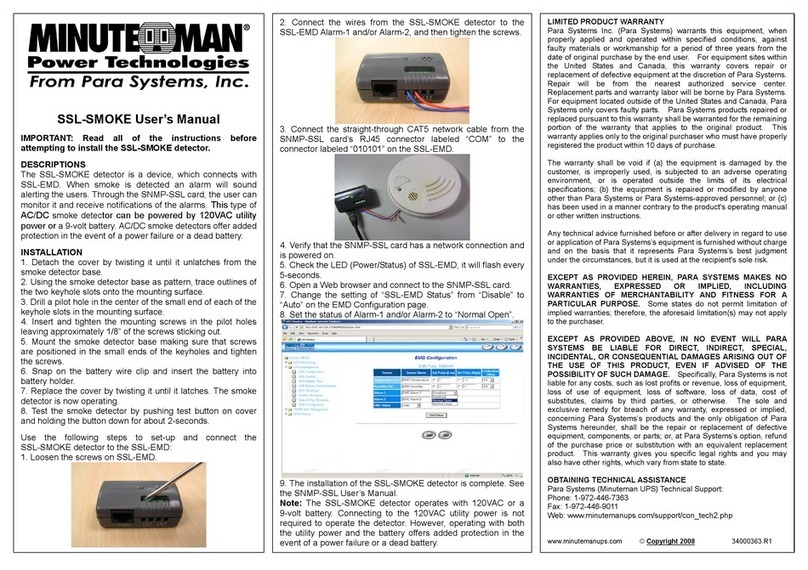
Para systems
Para systems MINUTEMAN SSL-SMOKE user manual

D-tect Systems
D-tect Systems Mini Rad-D Frequently asked questions

Unimax
Unimax 1979 user manual

Pentair
Pentair Goyen Mecair FFD Installation and operation manual

MSA
MSA FireHawk Rescue Belt II Instructions for use

ZUDSEC
ZUDSEC ZDD-285PIR installation guide

